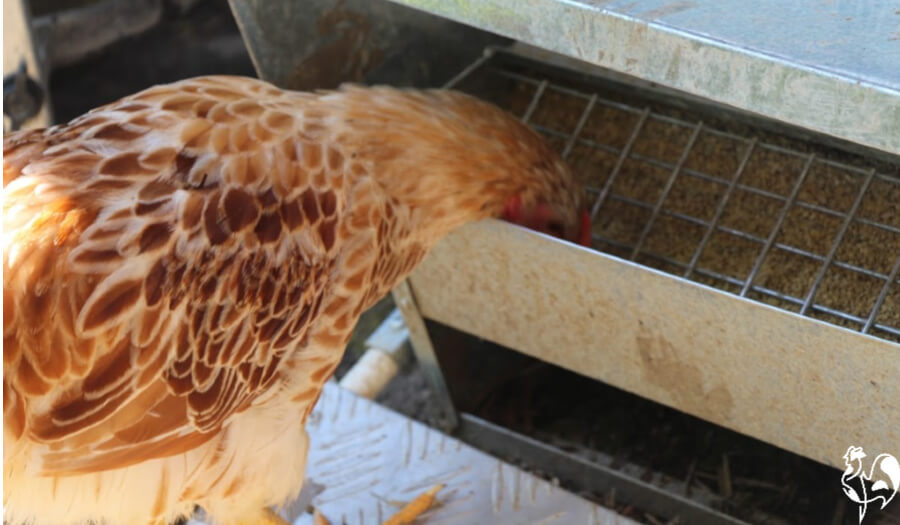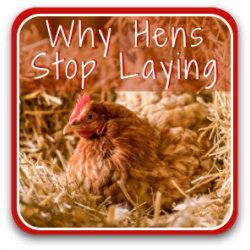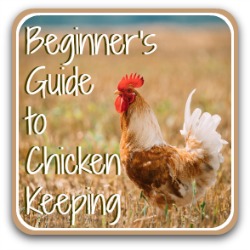Raising chickens for eggs: a step-by-step guide for beginners.
Thinking of keeping hens for those amazing freshly laid eggs?
Whether you dream of collecting fresh, golden-yolked eggs from your backyard or simply want a more natural source of food for your family, raising a small flock of hens is a fun and rewarding experience.
In this beginner’s guide, I’ll walk you through everything you need to know, from choosing the right breeds and setting up nest boxes to the best feed for laying hens, knowing when to expect your first eggs, and the benefits and costs.

🪶 Featherlight Takeaways.
Quick insights from this article – especially helpful if you want to make sure your hens have the best care ever!
- Hens lay without roosters! The male is only needed to fertilise eggs.
- Starting hens on layer feed at about 18 weeks supports strong shell formation.
- One nest box for every three hens in a quiet, private space is the optimum layout for egg production.
- Not all breeds lay daily. Choose reliable laying breeds for the best results.
- Hens usually begin laying between 19 and 26 weeks, depending on breed and season.

Here's what's covered in this article: click any link to go to that section.

Essential basic requirements for happy laying hens.
Before your hens can provide you with a steady supply of fresh eggs, they need the right environment. At the most basic level, that means providing:
- Secure housing: a good quality coop that protects your flock from predators and keeps them safe from the weather.
- Private nest boxes: place them in a quiet corner of the coop. Here’s how to choose the best nest boxes.
- Good food and clean water: layer feed, fresh water daily, plus healthy extras like greens or bugs.
- Space and comfort: enough room to perch, dust bathe, and avoid overcrowding.
- Low stress: a calm, consistent routine so your hens stay healthy and keep laying.

How to minimise stress to improve egg-laying.
Chickens are creatures of habit, and anything out of the ordinary can stress them to the point where they stop laying.
So keeping your hens calm and comfortable will help them to lay regularly.
Common stress factors include...
- Predators nearby (even if they can't get into the coop, chickens can sense their presence nearby).
- Overcrowding in the coop or run.
- Extremes of weather: both heat stress and very cold snaps.
- Illness or parasites.
- Changes in routine: chickens don't deal well with change, and even something as simple as moving the coop or adding new flock members can have an impact.
How to keep stress levels low:
Good husbandry boils down to caring properly for your flock – essential if your hens are going to remain healthy egg-layers. So...
- Provide enough space, perches and dust baths to allow for natural behaviour.
- Recognise and protect against extremes like heat exhaustion and frostbite.
- Keep a consistent daily routine for feeding, opening and closing the coop, and cleaning.

Nest boxes: a safe place to lay.
One of the most critical things laying hens need is a private, comfortable spot to lay their eggs. Nest boxes offer that security, as well as helping keep eggs clean and easy to collect.
- How many? At least one nest box for every three hens is ideal. Be prepared though – they’ll still all want the same one!
- Placement: keep nest boxes slightly off the ground in a quiet corner of the coop, away from the hustle and bustle of the flock.
- Predator safety: place boxes where hens won’t feel exposed or startled while laying.
- Privacy: some chicken keepers hang curtains over the entrance for extra seclusion. If your nesting area is naturally dark and tucked away, that may not be necessary.
- For a step-by-step guide to the best nest box options, from DIY to ready-made, see my detailed article on choosing the right nest boxes.
🐥 A note from my flock: hens are very particular about their privacy. When I once disturbed Miss Gertrude mid-lay, she let me know what she thought about it – loudly!
Take a look...

How to feed chickens for healthy eggs.
Once a hen starts laying, she needs less protein than previously, but more calcium to produce strong eggshells.
Offering the right feed makes sure you will keep your ladies healthy, whilst at the same time ensuring you get highly nutritious, tasty eggs.
Here's how to get the balance right.
(Some links in this section are "affiliate links", which means that if you click and buy something, I earn a small commission at no extra cost to you).
1. Layer feed.
- Switch to a commercial layer feed from about 18 weeks, before your hens start to lay.
- A good quality commercial feed balances protein, calcium and minerals for optimum egg production.
- For ultimate quality, I always choose an organic, non-GMO feed.
- Feed freely during the day but do not leave in the coop overnight – you will inevitably attract rodents.
- Instead, use an automatic feeder like this one, which allows free access to chickens only!
🐥 A note from my flock: Miss Lulu never misses a chance to be first at the feeder!
She knows that my Grandpa's Feeder allows free access to chickens only!
2. Free range foraging.
- Hens love to supplement their diet with clover, weeds, flowers, insects and the occasional windfall fruit.
- These add to the nutritional value of eggs – and it will keep your hens entertained at the same time.
3. Kitchen scraps.
- Leftover greens, vegetables and over-ripe fruit are safe – in moderation.
- Avoid fatty, salty or sugary foods which can lead to illness and sudden death.
- Some foods are potentially fatal for chickens. See my detailed guide about things chickens should never eat.
Please note: I am required by law to tell you that in Europe and the UK, EU and DEFRA regulations state that chickens should not be fed any foods which have been in a kitchen.
4. Treats.
- Healthy treats can support hen health, but always in moderation.
- Moulting hens can be helped with healthy higher protein food.
- Treats should form no more than 10% of your hens' diet. Don't kill them with kindness!
🐥 A note from my flock: a watermelon treat disappears in minutes with my hens – and they always seem to know when I’m bringing it!
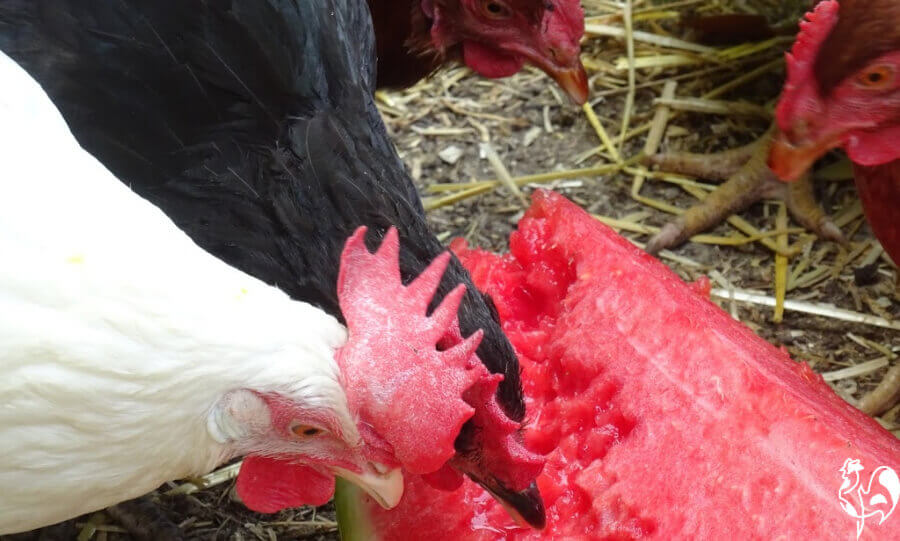 A healthy watermelon treat always goes down well with my flock!
A healthy watermelon treat always goes down well with my flock!
Oyster shell: extra calcium for strong eggshells.
Laying hens need about 4 grammes of calcium for every egg they produce. Even with a balanced layer feed, all layers will benefit from a separate supply of calcium.
- Provide oyster shell in a small dish, so hens can take it when they need it.
- Do not mix it into their feed: they’ll eat it instinctively as required.
- For full details about why oyster shell matters, how it differs from grit, and alternatives you can use, see my complete guide to oyster shell for chickens.

Is raising chickens for eggs worth the cost?
Financially, almost certainly not. Store- or even farm-bought eggs are relatively inexpensive and the cost of raising chickens for eggs will far outweigh the cost of buying them.
But having your own fresh eggs brings benefits that money can't buy:
- Freshness: from nest box to kitchen on the same day. Shop bought eggs are several days old before they even reach the point of sale.
- Quality: home-raised eggs are nutritionally richer.
- Pleasure: seeing your ladies scratching round in their run, or free-ranging in your garden, is immensely satisfying.
- Compassion: re-homing ex-battery or rescue hens offers the chance of a happy, fulfilled life.
- Education: teaching children and grandchildren about caring for other living things is investing in a caring future.
 As well as being fun, keeping hens is a great way to teach kids where their food comes from.
As well as being fun, keeping hens is a great way to teach kids where their food comes from.- So whilst your flock may not reward you financially, they will certainly enrich your life in other ways.

Choosing the best egg-laying breeds.
Some chickens are bred for reliable egg production, while others lay less often but bring different benefits like colourful eggs or friendly personalities.
- My favourite layer, not only for eggs but for all-round friendliness and entertainment value, is the Red Star: the common, brown chicken.
How to choose?
Here are four of the best egg laying breeds for beginners:
Red Star: the most reliable egg-layer.
- ≈300 eggs per year
- Eggs are light brown in colour
- Friendly, comical, dependable daily layers, often available as ex-battery rescues.
- My top choice for beginners.
Leghorn or Livorno: the best forager.
- ≈280–320 eggs per year
- Eggs are pure white
- Top layers; excellent at finding their own foraged food; can withstand extremes of weather
- Not very friendly, and can be a bit "flighty".
Black Copper Marans: the ultimate chocolate egg!
- ≈150–200 eggs per year
- Eggs are a delicious chocolate brown colour
- Calm temperament, moderate layers, also do well in different climates.
Wyandotte: the stunning chatterbox.
- ≈200 creamy brown eggs per year
- Beautiful plumage, chatty and friendly, good all-rounders
- Generally start laying later than other breeds.
Still not sure? Look around your neighbourhood. Talk to other backyard keepers. What breeds are common? Which hens do they consider the best for eggs?
You’ll also notice that hens lay eggs in many colours: white, cream, chocolate brown, even blue and green.
Eggshell colour depends entirely on the breed, not on diet, and the shell colour doesn’t affect the nutrition inside.
Want a colourful egg basket? See my full guide on chickens who lay coloured eggs.
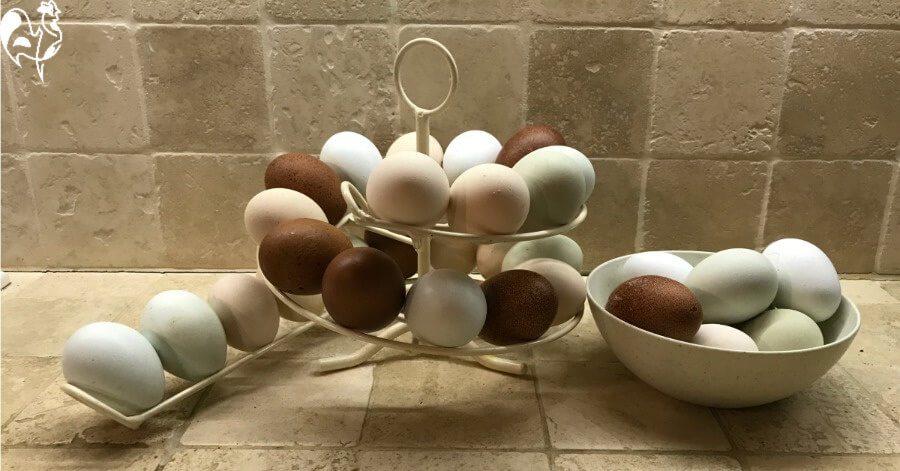 My flock's colourful egg collection.
My flock's colourful egg collection.
How do I know when my hens will start laying eggs?
A young female chicken will usually start laying eggs between 19 and 26 weeks of age.
But as a hen comes closer to the point of lay, there will be also be some physical signs you should look out for.
Signs your hen is about to start laying.
- She begins "squatting" when you approach her or place your hand over her back? It's an instinctive mating behaviour which indicates maturity.
- Her comb and wattles grow larger and become a darker red.
- Notice the difference in this photo of Lulu, one of my first Red Stars, before and after she came into lay.
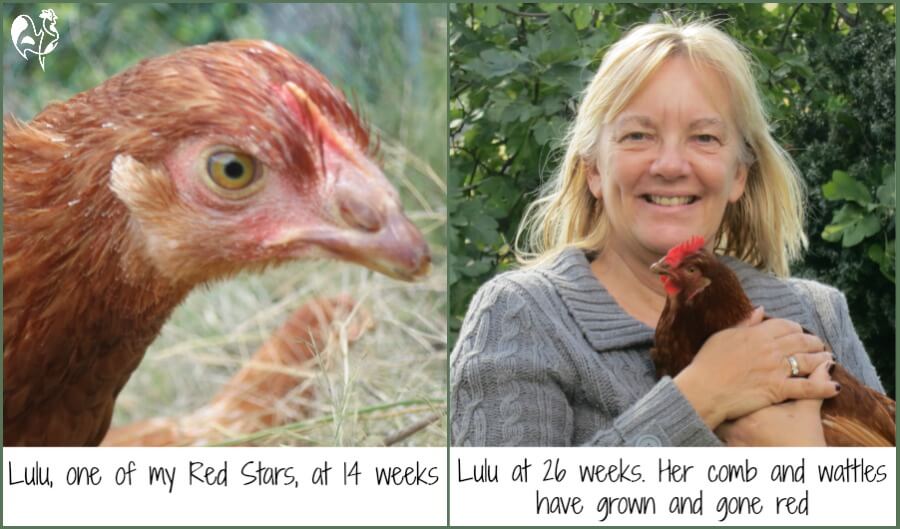
🐥 A note from my flock: My Red Stars laid at around 22 weeks, but my Wyandottes kept me waiting until 34 weeks. Every flock has its own rhythm.

How long will my hens carry on laying for?
A healthy hen bred for laying will usually give you an egg almost every day during her first year. After that, production naturally slows down.
What to expect.
- Year 1: most laying breeds produce 5-6 eggs per week.
- Year 2: production drops slightly to around 3-4 eggs per week.
- Year 3 and beyond: hens lay fewer eggs, with longer breaks. Many continue to lay an occasional egg for years.
Other factors which affect how long hens lay:
- Breed: Commercial hybrids like Red Stars lay almost every day for 1 to 2 years, after which they often burn out. Heritage breeds such as the Wyandotte lay fewer eggs but for longer overall.
- Moulting: Most hens stop laying for a few weeks in autumn while regrowing feathers.
- Season & daylight: Short winter days slow production unless you add artificial light.
🐥 A note from my flock: I don’t add artificial light in winter. I’d rather let my hens rest – they’ve worked hard and earned it!

Frequently asked questions.
How many hens should I have, to provide eggs for my family?
How many hens should I have, to provide eggs for my family?
Chickens are sociable creatures, so you should always have at least two.
A good layer like the Red Star, will lay on average 5 - 6 eggs per week in her first year.
For a family of four, 3 or 4 hens is usually enough.
Do different coloured eggs have different nutritional values?
Do different coloured eggs have different nutritional values?
No. Shell colour is determined by the breed of hen, not diet.
For the full story, see my article on chickens who lay coloured eggs.
Do I need a rooster for hens to lay eggs?
Do I need a rooster for hens to lay eggs?
No. Hens lay eggs without a rooster. A rooster is only necessary if you want fertile eggs to incubate and hatch your own chicks.
And although some are kind, other roosters can be problematic...
Can hens lay more than one egg a day?
Can hens lay more than one egg a day?
No, it's biologically impossible.
It takes a hen about 24–26 hours to form an egg in her oviduct, so one hen can only produce one egg a day.
Some days she may skip laying, but she will never laymore than one per day.
If you want more eggs, the only answer is to keep more hens!
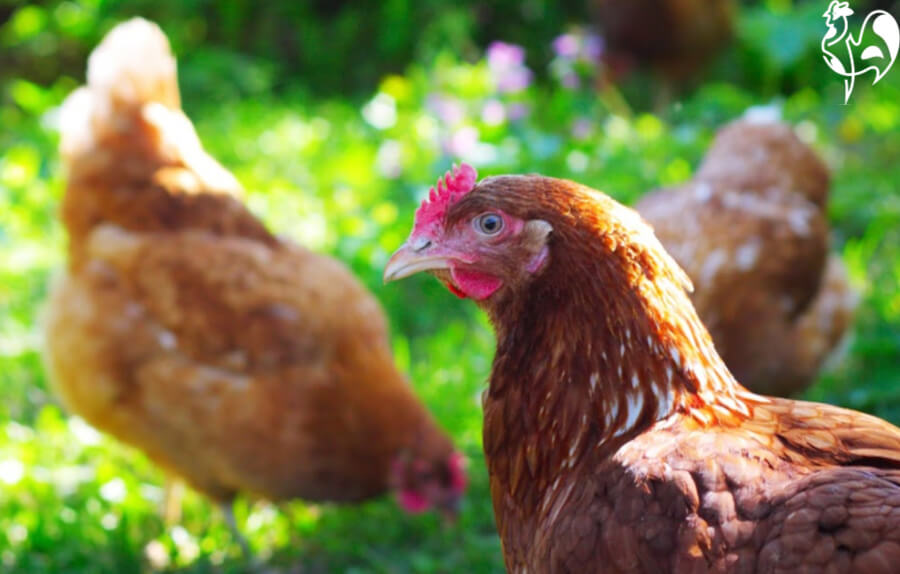 Want more eggs? Add more hens!
Want more eggs? Add more hens!
Related articles.

Sources and further reading.
A lot of "facts" you'll find on the internet are often people's individual views, based on inaccurate information repeated from poor quality sources.
The information I provide in this article and others is based not just on my own experience, but on evidenced facts from scientific, peer-reviewed research and books from highly respected and experienced poultry keepers such as Gail Damerow.
Some of the trusted sources I have used in this article are these.
1. British Hen Welfare Trust: How does my hen produce an egg every day?
2. Sophie Rehault-Godbert et al: The Golden Egg: Nutritional Value, Bioactivities, and Emerging Benefits for Human Health. Pub. US National Library of Medicine, 2019.
